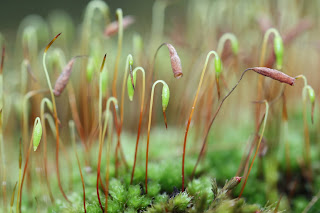I recently came across the following poetical words written by John Clare whilst he lived out the latter years of his life confined to the Northampton Asylum. For some of these years Clare was free to roam in the asylum grounds so may have still had access to at least some of these sounds, whilst some may be distant memories.
Pleasant Sounds
The rustling of
leaves under the feet in woods and under hedges;
The crumpling of cat-ice and snow down wood-rides, narrow lanes, and every
street causeway;
Rustling through a wood or rather rushing, while the wind halloos in the
oak-toop like thunder;
The rustle of birds’ wings startled from their nests or flying unseen into the
bushes;
The whizzing of larger birds overhead in a wood, such as crows, puddocks,
buzzards;
The trample of robins and woodlarks on the brown leaves, and the patter of
squirrels on the green moss;
The fall of an acorn on the ground, the pattering of nuts on the hazel branches
as they fall from ripeness;
The flirt of the groundlark’s wing from the stubbles- how sweet such pictures
on dewy mornings, when the dew flashes from its brown feathers.
John Clare
I fear Covid19 has us all under some level of
indefinite confinement now and I felt it apt to list some pleasant sounds from
nature that I am especially fond of. In
my case the words will be non-poetical.
One or two are distant memories from my childhood, but most are sounds
commonly heard.
Pleasant Sounds.
The tide as it flows onto sand or shingle, and the
quieter swish as it retreats. The
crashing of waves on the shore during heavy seas. Waters of a stream as it gently flows by and
the gentle patter of light raindrops on the leaves of woodland trees. Waters gushing down channels of fellside
after heavy storms. The gentle plop
of fish as they jump out of river or lake.
A Cuckoos call on a sunny Sunday morning as church
bells ring out. The melodic song of the
Blackbird on summer evenings as the light begins to fade and night
approaches. The bark of distant deer in
woodland in the cool dawn air.
The swishing sound of trolley buses driving slowly
through snow and slush as the headlights flash across my childhood bedroom
ceiling. Sounds of treading through
thick newly fallen snow. The calls from skeins
of geese on cold clear days of winter.
Eider Duck calls. Ice sheets
cracking as a thaw sets in.
The very beginning of the dawn chorus whilst it is
still dark and before the growing crescendo from multiple species. The rustling of reedbeds blown by a light
wind. The snuffling of the Hedgehog as
it slowly makes its way across the lawn in darkness.
The drone of bumblebees as they search for pollen on
hot summer days. Small rocks rolling
down steep scree. The growing all round
sound as one approaches a seabird colony and breathes in the scent of guano. Murmurs from a Starling murmuration. Calling from Tawny Owls in the darkness.
Churring Nightjars as sunset fades and darkness
takes over. The clap of the Nightjars
wings and drumming of Snipe. The sound
of silence now so infrequently found in our modern world. The melancholic song of the Bullfinch in winter. The rustle of leaves blown by a gentle
breeze. The reeling of Grasshopper Warblers in late evening when other birds have fallen silent. Calls from myriad corvids as
they gather pre-roosting.
Killy Birder
Well, that is a few sounds that I enjoy, and I have
deliberately not included photographic images (most expect them these days) as
this is all about sound and imagination.
Sound is so important if you take seriously an
interest in the natural world. One of
the reasons I gave up on group birding is that I found so many folks more
interested in their own voices and that of their companions, much more so than
the natural sounds around them. I cannot
help but feel John Clare would have agreed with me on that one.


























